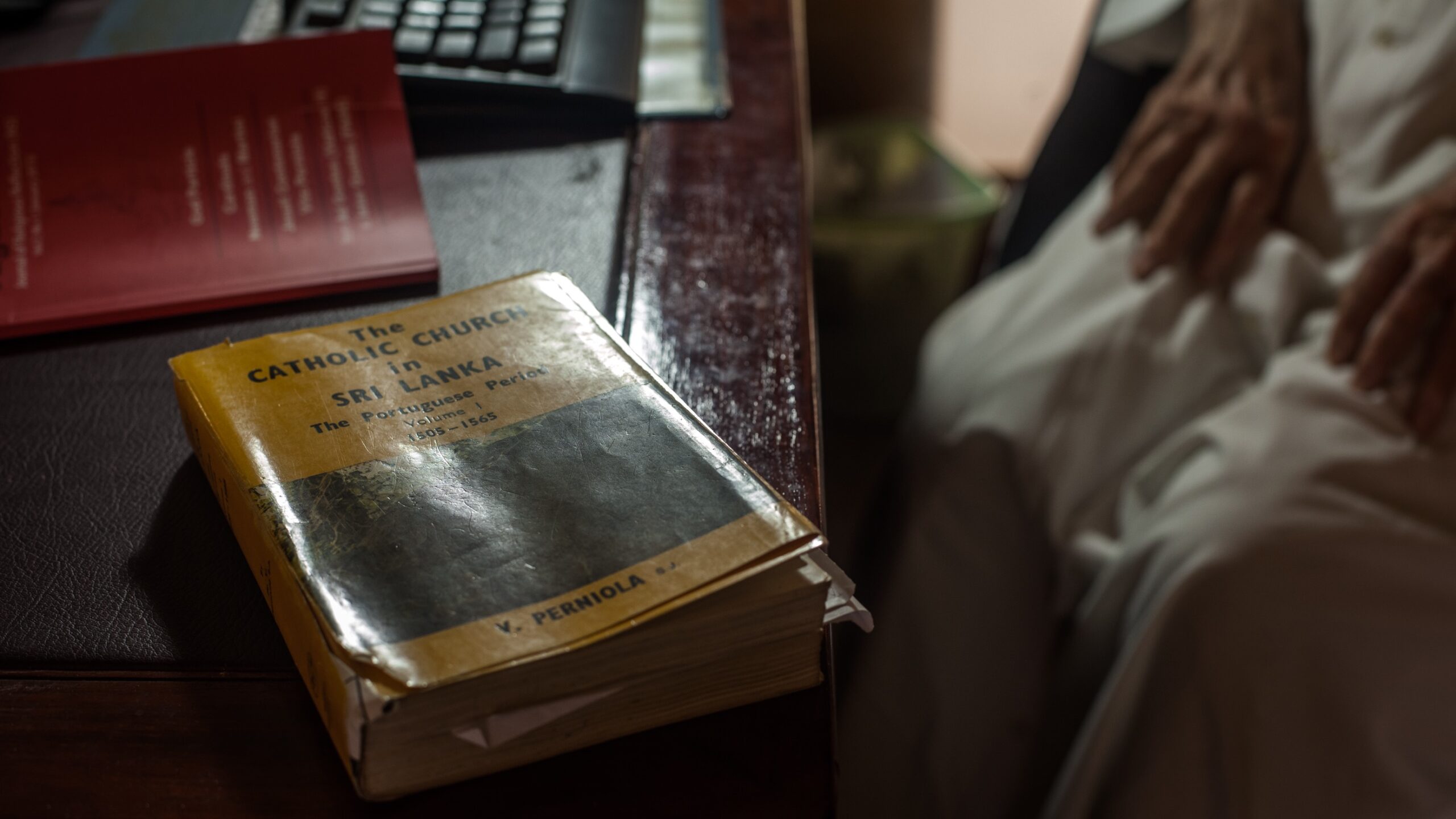The linguist
Father Vito Perniola
One hundred year old Jesuit priest Father Vito Perniola came to Ceylon from Italy in 1936. He has been here ever since and was even granted Sri Lankan citizenship in 1970. As a linguist, he learnt Pali and Sanskrit and even taught Pali to Buddhist monks and nuns.


Transcript and translations
Language
Subjects discussed
We have been so many years in Ceylon, nobody has studied Buddhism. Will you be able to do that?
I was born in Italy, in the prov…in a village… in a small town in the province of Bari, in the south of Italy. I knew nothing about Jesuits. I knew nothing about India and Ceylon. And yet I was called to come here. In this way, I learned English and I began to learn something about India and about Ceylon.
And then there was the question, what are you going to study for now? I was told, “We have been so many years in Ceylon, nobody has studied Buddhism. Will you be able to do that?” And so I said…about 70 years. Here. We Jesuits. There were Belgian Jesuits and a few Italians from Naples… said, “Nobody has ever studied Buddhism. Will you do it?” I said, “Well, I’ll try”.
With result, I had to study two languages, Pali and Sanskrit. And in the town where I was in Galle, there was nobody at that time that could teach me any of these two languages. So I had to manage to find the books, to study them, then sit for the intermediate Sanskrit, Pali, Latin, Italian, four languages.
Then I had to study for the honours degree in Pali and Buddhism, with Sanskrit. On the 1 June 1936, I was in Sri Lanka, and on the 2 June, I was in the hall of St Peter’s College, sitting for the matriculation (laughs).
I was a teacher and was not recognised as a teacher. I was a rector of the college and was not recognised. So I said, well, the only step is to ask for citizenship. I got somebody to pat me on the back (laughs). And so I got my citizenship in 1949, 21st of December. I think it was 1949, like that. And in this way, by teaching Pali, you had priests in my classes learning Pali and Buddhism. Nuns learning Pali and Buddhism. It was also a help for them, to open up their eyes and their mind.
Now, in fact, while teaching Pali and Buddhism, there was no good Pali grammar. I think there must have been something in Sinhala, but in English nothing. So I started composing a Pali grammar for the students, so they could put in their hands a Pali grammar, like that, by going through textbooks and collecting examples and so on. So I published it within two years, I think I published it. But then once published it, I started revising it and adding and adding. But then when I was having a book as big as this, as a book almost complete, almost complete…(inaudible) of the London examination, so Pali was dropped. But my grammar was published in Ceylon. My grammar was published in Oxford by the Pali Society and has remained the standard grammar in Europe.





Comments
Leave a comment